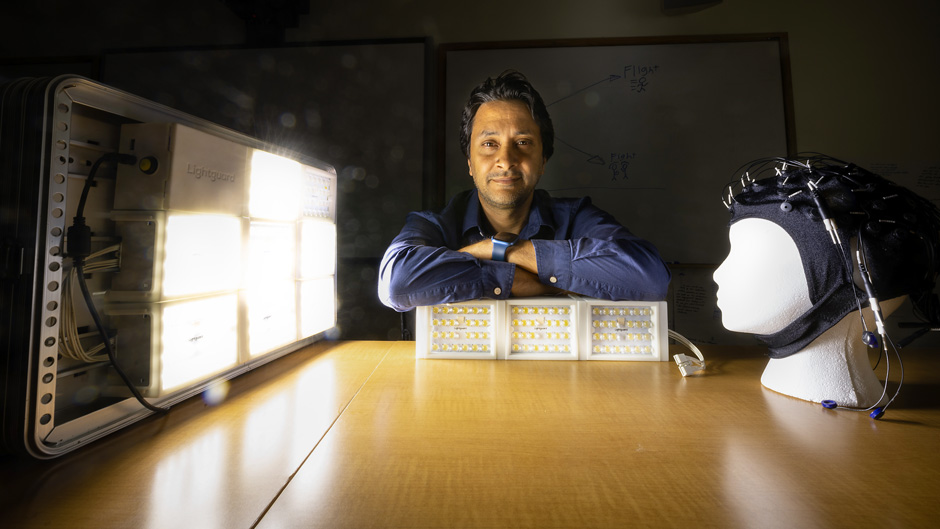Brian Arwari grew tired of what he calls “the cycle.”
“We all know the cycle,” said Arwari, associate clinical professor in the Department of Kinesiology and Sports Sciences at the University of Miami School of Education and Human Development, and head of the Neurocognitive Lab.
“There is a mass shooting. Key people offer thoughts and prayers. There may be a protest and people say, ‘this is ridiculous and it must stop.’ Then people forget until the next time it happens,” he said.
In 2020, the most recent year for which complete data is available, 45,222 people died from gun-related injuries in the United States, according to the Centers for Disease Control and Prevention. This excludes suicides.
Churches, banks, shopping malls, offices, schools, synagogues, and convenience stores are some of the venues that have been the sites of major shootings. In 2023, there have been 146 mass shootings—an incident where three or more people die—according to the Gun Violence Archive.
Wanting to stem what he sees as an epidemic in shootings, Arwari, working with graduate engineering student Luis Carlos Diaz, has designed a device called Lightguard, which—when triggered by a well-placed button—can temporarily dazzle an assailant.
The Lightguard Security System is a light-based defensive device that produces a flashing pattern of thousands of lumens in output, temporarily impairing an attacker’s vision. The assailant is functionally blind for about 10 to 20 seconds, with partial visual impairment that may last up to a few minutes. The flashes of light can be repeated to extend the period of disability.
“You can put two, three, five, or 10 light modules at ‘choke points.’ These are areas of a building that people are forced to go through,” said Arwari.
Lightguard also functions as an emergency notification system that alerts the police and/or security guards, as well as key people identified by the system, of a potential threat.
Arwari and Diaz have been working on creating Lightguard for the past three years. The venture has been financed by Ernest Bacharach, a Key Biscayne resident, who was a former managing partner with Advent International, a global private equity firm.
Arwari has received a patent for the system from the U.S. Patent and Trademark Office. He created the device working on the premise that a human’s nervous system can oscillate between two extremes of a continuum.
“You are either in rest or digest, which means that you are relaxed. On the other end, you are in fight or flight mode,” he said. Lightguard switches the attacker into the flight mode, he added. The light startles the attacker and most times when they are startled, they will run away. “The assailant goes from being the hunter to being the hunted,” he said.
In addition to public spaces, Lightguard can be installed in private homes or buildings to deter home invaders or robbers, according to Arwari. In a home with two floors, the light modules can be placed at the top of the stairs. In a convenience store, the modules could be hung behind the cashier.
“The only way to stop an assailant is to defend yourself,” said Arwari. “If you have to go into hand-to-hand combat with someone with a gun you are at a great disadvantage. But if that person is visually impaired, then you have a greater chance.”
As an engineering student, Diaz worked on the electronic and technological part of Lightguard.
“These lights are extremely strong and they flash in a random pattern,” Diaz pointed out.
Lightguard has been tested by local police departments and SWAT teams, noted Arwari. He said many of the law enforcement agencies believe the system could be effective.

